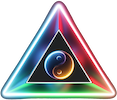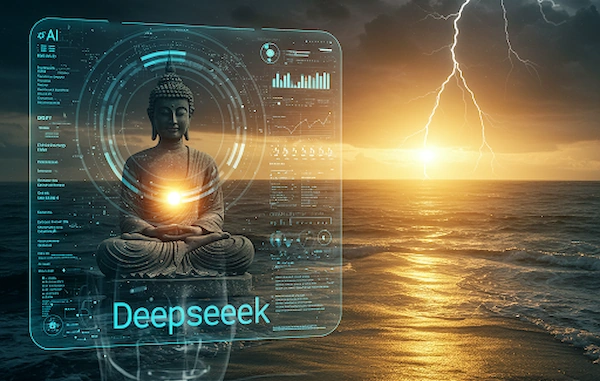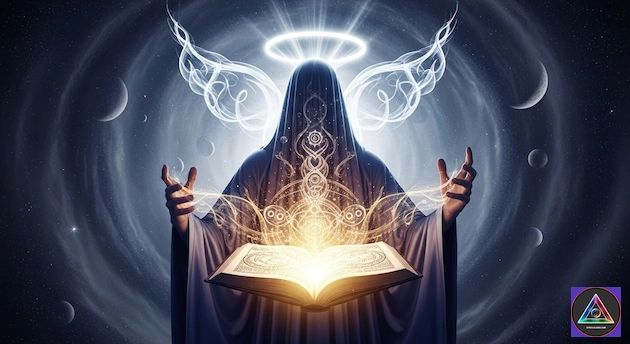📊 Radical Awakening Infographic
1. What is the core philosophy behind this guide?
The guide’s core philosophy is one of deconstruction, not acquisition. Unlike many spiritual paths that focus on adding beliefs, practices, or “spiritual” identities, this guide is designed to help you strip away the layers of conditioning, illusion, and false identity that obscure the truth of what you already are: boundless, unconditioned awareness. It is based on the “The Paradox of Becoming,” emphasizing that the frantic search for enlightenment is the very activity that prevents its recognition.
2. Who is this guide for? And who is it not for?
This guide is for the sincere spiritual seeker who has grown weary of traditional paths, who suspects that the “seeker” itself might be the illusion, and who is ready for a period of radical self-honesty and deconstruction. It is for those who feel trapped by the “spiritual ego” and are ready to look at their own shadows and unchallenged assumptions.
This guide is not for those seeking quick feel-good experiences, spiritual bypassing, or a new set of beliefs to cling to. It is not a gentle introduction to spirituality; it is a deep, often challenging, dive into the nature of self and reality that requires courage and a willingness to be “un-done.”
3. Is this guide really free? What’s behind the Week 2 paywall?
Yes, the initial and most foundational part of the guide is offered completely free of charge. This includes the “Initial Assessment: The Seeker’s Shadow” and all of “WEEK 1: The Illusion of the Path” (Days 1-7). This allows any sincere seeker to engage with the core paradox of the spiritual search and gain immense value without any financial commitment.
Weeks 2, 3, and 4 are for those truly committed to the deeper, and often more challenging, work of dismantling the self. A one-time payment of $10.00 unlocks the remaining 23 days of the guide. This small fee serves two purposes:
- It acts as a filter, ensuring that those who proceed are genuinely committed to the profound deconstruction work ahead.
- It supports the creators in maintaining and offering this deep, interactive content.
We also offer the option to purchase all 4 guides in a single discounted bundle.
4. What are the “Key Concepts for Deconstruction” and why are they important?
The guide introduces several “Key Concepts for Deconstruction” at the beginning, such as The Seeker, Spiritual Ego, Illusion of Control, The Void (Sunyata), Spiritual Bypassing, Radical Honesty, and Non-Duality. These concepts are not meant to be collected as new knowledge, but to serve as a foundational language and framework for the inquiry that follows. Understanding these ideas from the outset helps you recognize the subtle traps the mind sets for itself on the spiritual path, making the 30-day journey more effective.
5. How should I use the journaling prompts and interactive elements?
The journaling prompts, the initial quiz, the paradox generator, and the completion buttons are essential parts of the guide.
- Initial Quiz: Be radically honest with yourself. The result is not a score but a mirror showing the starting point of your deconstruction.
- Journaling: Use the
textareafor each day to write without censorship. This is your private space to confront the concepts and witness your own mind’s reactions. The act of writing brings unconscious thoughts to the surface. - Complete Buttons: Clicking “Acknowledge this Illusion” (and similar buttons) is a powerful ritual. It is an act of conscious recognition that helps solidify the insight of the day and updates your progress, providing a sense of momentum on this path of subtraction.
6. What happens if I miss a day?
This is not a race or a rigid discipline. If you miss a day, you have not failed. Simply return to the guide when you can. The “Deconstruction Progress” bar is a motivational tool, not a judgment. The most important thing is the sincerity of your engagement, not the perfection of your schedule. It is better to spend three days deeply contemplating one day’s lesson than to rush through to stay on track.
7. Can I download my journal entries or a certificate?
Yes. Upon completing the 30-day journey, a “Download Certificate” button will appear. This allows you to download an HTML file of your Certificate of Completion, personalized with the name you entered at the beginning and the completion date. Your journal entries are stored locally in your browser’s localStorage as you type them, so you can copy and paste them into a personal document for your own records at any time.
⚠️ Important: When your data gets deleted
Your saved progress and journal entries will be permanently lost in these situations:
- Clearing your browser’s cache, cookies, or browsing data;
- Using private/incognite browsing mode (data isn’t saved at all);
- Browser automatically clearing data when storage is full;
- Browser settings configured to clear data on exit;
- Switching to a different browser or device;
- For mobile app users: reinstalling the app or clearing the app cache.
💡 Backup recommendation: Since your reflections and progress can’t be recovered once deleted, consider periodically copying your journal entries to a notes app, document, or cloud storage service. This ensures you’ll always have access to your personal insights, even if the browser data is lost.
The system prioritizes your privacy by keeping everything local to your device (we have no access to your data), but this means the responsibility for data preservation rests with you.
8. What does “Reset the Illusion” do?
The “Reset the Illusion” button at the end of the guide clears all your saved progress, including your name, completed days, and journal entries from your browser’s storage. This is a symbolic act, allowing you to start the 30-day journey again from a blank slate. Many find that going through the guide a second or third time reveals deeper layers of illusion they missed before.
9. What is the “Spiritual Paradox Generator”?
The paradox generator is a unique tool designed to short-circuit the conceptual, linear mind. The ego seeks to understand things in a logical, A-to-B fashion. The paradoxes presented (e.g., “The path is walking you”) are designed to be contemplated, not solved. They point to a truth that exists beyond the mind’s grasp, encouraging a shift from intellectual knowing to a more direct, intuitive understanding.
10. What is the difference between the “True Dark Night” and “Psychological Depression” as mentioned in the guide?
The guide makes a crucial distinction in Day 14.
- Psychological Depression is typically biographical, often linked to life circumstances, trauma, or biochemistry. It involves a constricted sense of self and often responds well to therapy and/or medication.
- The Dark Night of the Soul is an ontological crisis—a crisis of being. It’s a spiritual process where the very foundations of your reality and sense of self begin to dissolve. It’s often characterized by a profound disillusionment with all external reality and a sense that life lacks inherent meaning.
The guide provides a comparison table to help you discern the difference but strongly advises seeking professional help if your state is debilitating or involves thoughts of self-harm, emphasizing that there is no spiritual bypass for genuine psychological needs.
11. Who was involved in the development of this guide?
Like all the other resources available on our website and official app, this guide is the result of collaborative work by several researchers and scholars from The Spiritual Seek team. The main contributors to the 30-Day Radical Awakening Guide were Dr. Martin Landi, Dr. Armando Giacoboni and Dr. Philip H. Meo. The webmaster of our platform, Luke Garrison, also provided essential technical support.
12. Where can I read verified user opinions about this guide?
You can read the opinions of users who have downloaded our official app, Spiritual Personality Tests, and taken the personality tests and 30-day guides within the app itself. These reviews have been collected in several ways: through the Google Play Store and Apple App Store, as well as from other websites and via direct emails sent to The Spiritual Seek staff: read them here.
13. Is this guide backed by any scientific evidence or empirical data?
Absolutely. It is based on long-established knowledge and theories, as well as modern scientific studies and academic research. Below you can browse a list of studies and research papers from which we gathered information and insights for its development.
14. How this guide transcends the alternatives:
While many online resources touch upon spiritual awakening, The Radical Awakening Guide offers a depth, structure, and interactive experience that is unparalleled. Here’s a look at how it compares to other potential competitors and why it stands out.
Potential Competitors:
- Daily Stoic (Ryan Holiday): Offers daily Stoic wisdom and challenges, focusing on virtue, resilience, and perception.
- Waking Up App (Sam Harris): A meditation and philosophy app grounded in neuroscience and secular, non-dual mindfulness.
- Actualized.org (Leo Gura): Offers deep-dive, multi-hour YouTube videos on complex topics like enlightenment, consciousness, and reality.
- Various “Spiritual Awakening” Blogs and YouTube Channels: Numerous creators offer content on non-duality, shadow work, and spirituality, often in a less structured, more personality-driven format.
15. Why The Radical Awakening Guide is the superior choice:
1. A Masterfully Structured, All-in-One Deconstructive Path: While competitors offer pieces of the puzzle, this guide provides the entire framework. Daily Stoic is excellent for ethics and resilience but doesn’t focus on the dissolution of self. The Waking Up App is a premier tool for mindfulness but may not guide a user through the explicit, challenging deconstruction of the spiritual ego and shadow self in such a direct way. Actualized.org offers incredible depth but can be overwhelming and lacks the day-by-day, structured, and interactive integration. This guide synthesizes the philosophical depth of non-duality, the psychological maturity of shadow work, and the practical wisdom of Stoicism into one cohesive, 30-day journey.
2. Emphasis on Deconstruction, Not Accumulation: This is the guide’s most significant advantage. Most spiritual content, even when discussing non-duality, inadvertently encourages the accumulation of new knowledge, identities (“I am a non-dualist”), or states. This guide is explicitly designed for subtraction. Its entire methodology, from the language used (“Acknowledge this Illusion”) to its core philosophy, is aimed at dismantling the seeker, not decorating its prison.
3. Integration of Historical and Psychological Wisdom: The guide doesn’t just present abstract concepts; it grounds them in history and psychology. Each day’s “Core Revelation” is supported by:
- Historical Examples: From Plato’s Cave and the Gnostic dead-end to St. John of the Cross and Lao Tzu, these examples show that the challenges of awakening are timeless.
- Parables: The use of tales like Nasrudin’s Key or the Taoist Farmer makes profound concepts accessible and memorable.
- Psychological Depth: Explicit references to Jungian shadow work, the “Dichotomy of Control” from Stoicism, and the critical distinction between spiritual crisis and clinical depression provide a mature, grounded, and safe container for this deep work.
4. Unique and Powerful Interactive Tools: This isn’t a passive reading experience. The guide’s interactivity is designed to drive embodiment:
- The Initial Assessment Quiz: A brilliant tool for self-reflection that immediately frames the journey in personal terms.
- Daily Journaling Areas: Integrated directly into the day’s lesson, encouraging immediate application and reflection.
- The Paradox Generator: An innovative feature specifically designed to break the user out of conceptual thinking.
- Progress Tracking and Ritual Completion: The progress bar and “complete” buttons create a powerful feedback loop that builds momentum and ritualizes the process of letting go.
5. Fearless Exploration of “Dark” or “Taboo” Subjects: The guide courageously dives into topics that are often glossed over. Week 3, “The Dark Divine,” and concepts like Sacred Rage, the Dark Deities (Kali), and Sacred Transgression provide a safe and structured way to look at the parts of ourselves we fear most. This integration of the shadow is what transforms a fragile, bypassed spirituality into a robust, authentic, and whole one.
In essence, while other sources provide valuable information, The Radical Awakening Guide provides a transformative experience. It is an alchemical container, a 30-day interactive ritual designed to systematically dismantle the false to reveal the true. It is the definitive choice for the seeker who is ready to end the search.




